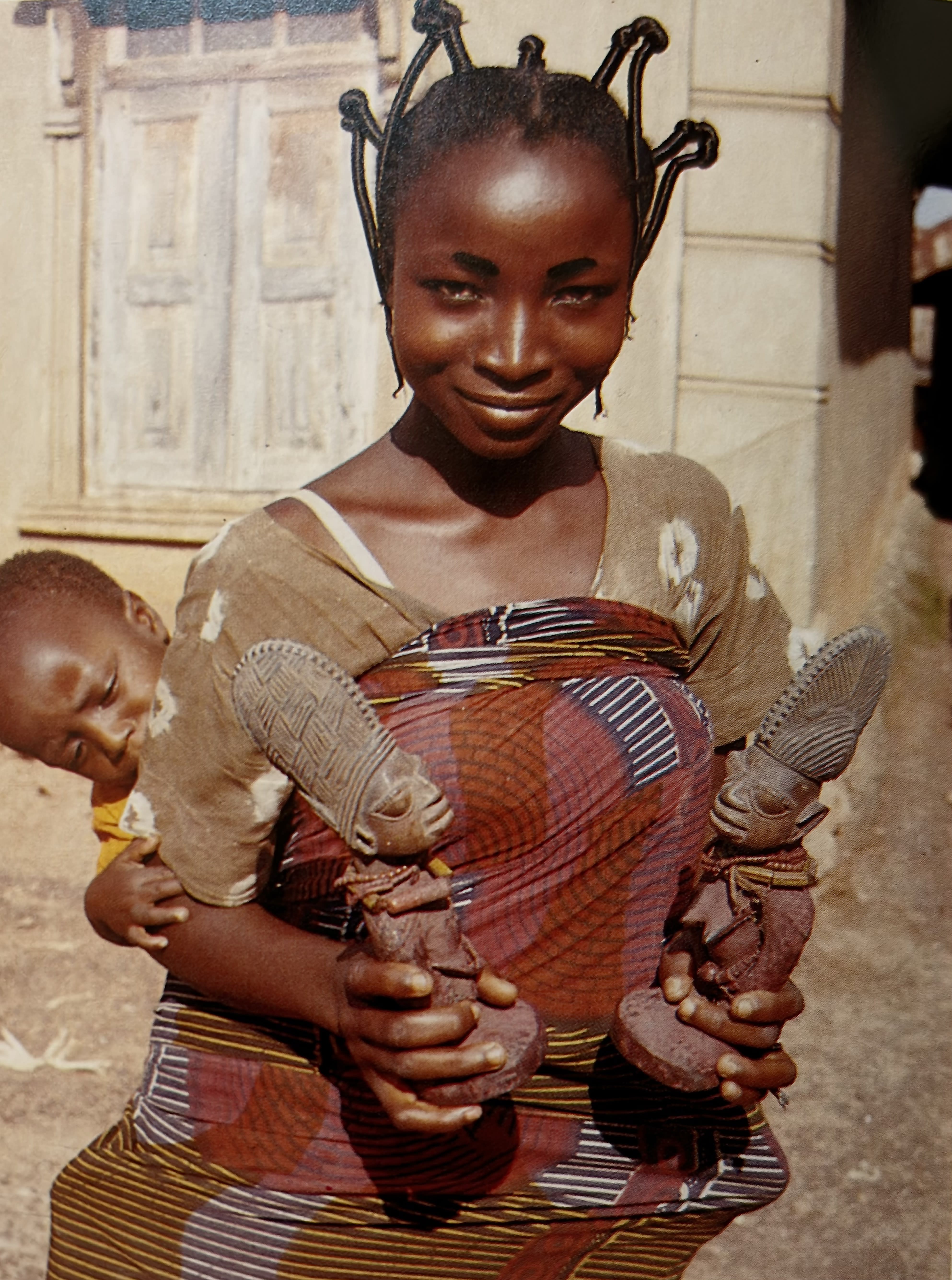
TWIN FIGURE ("ERE IBEJI")
Anonymous Yoruba artist
Nigeria, Late 19th century
Wood, beads, cauri shells
27 cm
Provenance
Walter Häusler, Thurgau, Switzerland,
acquired in Nigeria in the 1960s
Hammer Auktionen, Basel, 9 April 2020, lot 50.
Bruno Claessens, Antwerp, Belgium, 2020
Duende Art Projects, Antwerp, Belgium, 2024

This exceptional Yoruba twin figure or ere ibeji originates from Ilorin, a northern Oyo city. Only three other twin figures by this talented sculptor are known: a male-female pair in the Dos and Bertie Winkel Collection and a single female statue published by Fausto Polo in his magnus opus “Encyclopedia of the Ibeji”. Due to the lack of uniform characteristics, ibeji from Ilorin are often difficult to classify. This twin figure too is the work of an artist with a very individual style, various formal elements being unique to his style. The large, elliptical eyes feature large upper eyelids and are positioned slightly diagonally. The nose is summarily modeled, and a small opening without lips represents the mouth. The oval ears sit at the back of the head. The sharp jawline features the typical set of three vertical scarification lines. The stylized coiffure is decorated with vertical lines and clearly demarcated from the rest of the face. Residue of blue pigment is still visible. A necklace with small beads decorates the cylinder-shaped neck. The shoulders are more angular than generally is the case. The small, pointed breasts are placed high on the torso, almost at the level of the shoulders. The arms get broader as they descend with schematically rendered hands clasping the hips. The left arm features an armlet with several cauri shells. The narrow waist is hourglass shaped and decorated with three strings of green beads. The genitalia are not rendered. The legs get progressively thinner from the broad hips. The flat feet and round base are an old restoration. The entire body shows traces of camwood powder and a wear indicating the numerous libations the statue must have received.

A young woman who had inherited the care of ere ibeji from her father’s mother, the figures being carved around 1925. Photographed by John Pemberton 3rd in Ila-Orangun, 1974. Published in Drewal (Henry John), Pemberton III (John), Abiodun (Rowland), “Yoruba: Nine Centuries of African Art and Thought”, expo cat., edited by Allen Wardwell. Published and distributed by The Center for African Art and Harry N. Abrams, Inc., 1989, p. 172, fig. 191.